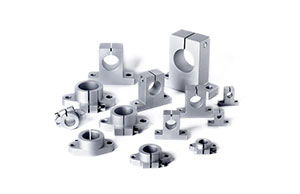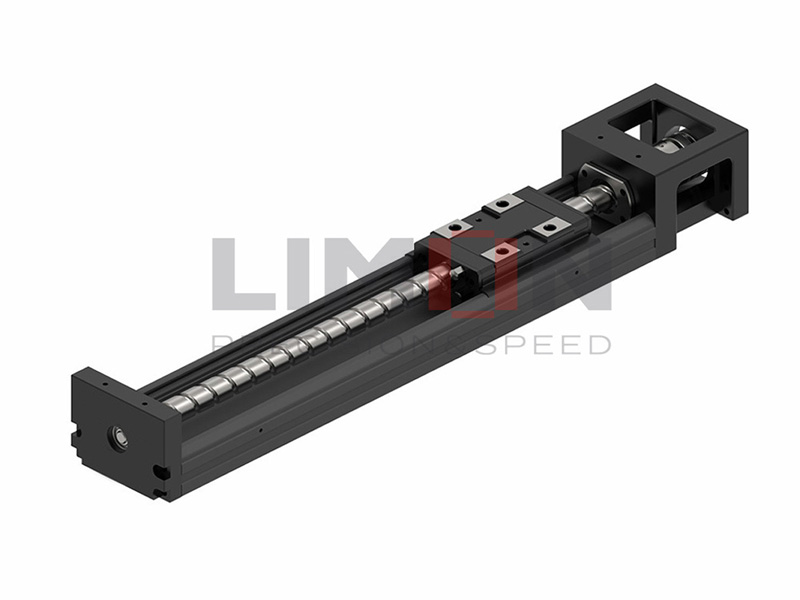Rusting Linear Bearings can erode performance, cause binding, and lead to costly downtime. Ignoring rust means unexpected failures and increased maintenance. Protecting and cleaning them restores smooth motion today.
Linear bearings require proactive anti-corrosion strategies—proper materials, lubrication, storage, and cleaning—to maintain performance, prevent rust damage, and extend operational life.
Discover practical steps to protect, restore, and maintain corrosion-free linear bearings today.

What Is Bearings Rust?
Bearings rust refers to the oxidation of steel surfaces on linear bearings caused by exposure to moisture, humidity, or corrosive environments. This rust forms red or brown flakes that interfere with the precision slide motion and damage polished surfaces over time.
Rust manifests initially as surface discoloration along shafts or inside races. Over weeks, these discolorations can cause pitting and corrosion pits. The rough texture generated by rust increases internal friction and can wear out mating components quickly.
In precision systems, even slight rust impedes smooth motion and can compromise the system’s precision. Left unchecked, rust escalates to seizure, metal fatigue, and premature bearing failure.
Causes Of Bearing Rust
Understanding what causes rust on Linear Bearings helps prevent it:
-
Moisture and Humidity
-
High relative humidity or condensation encourages oxidation.
-
Bearings stored in unsealed boxes in damp environments are especially vulnerable.
-
-
Contaminants
-
Cooling fluids, cleaning agents with water content, or washdown exposure bring corrosion risks.
-
Airborne chlorine or acidic vapors in industrial spaces can accelerate rusting.
-
-
Inadequate Lubrication
-
Lubricants with poor water displacement or lacking rust inhibitors fail to protect steel surfaces.
-
-
Improper Material Use
-
Standard carbon steel bearings in corrosive conditions rust more than stainless or coated variants.
-
-
Idle Storage and Shipping
-
Bearings left unused or improperly sealed in humid conditions develop surface rust over time.
-
Preventing these factors through material choice, environment control, and proper lubrication keeps Linear Bearings rust-free.
How Do We Rate Anti-Corrosion Properties?
Anti-corrosion effectiveness is assessed via standardized tests and material finishes:
-
Salt Spray Test (ASTM B117)
-
Philanthropic test exposing components to a fog of 5% salt water.
-
Stainless steels (304, 316) resist rust up to 1,000 hours; carbon steel parts rust within hours.
-
-
Coating Standards
-
Zinc plating, nickel plating, and anodizing layer steel with protective films.
-
DLC and PTFE coatings resist corrosion and reduce friction.
-
Coating thickness, internal bond strength, and pinhole absence determine performance.
-
-
Material Specification
-
Stainless steel grades, such as 304 or 316, are rated by corrosion resistance relative to chloride presence.
-
For extreme environments, duplex or super-duplex grades offer superior performance.
-
-
Lubricant Rating
-
Rust-preventive lubricants are rated by ASTM D6988 classification (A–F).
-
Grade “E” or “F” lubricants include moly or synthetic rust inhibitors for extended protection.
-
Using these measures ensures your linear bearings are rated and protected appropriately.
Preventing Rust On Linear Bearings
Implement these strategies to defend your linear bearings:
Environmental Control
-
Keep humidity below 60%. Use HVAC or dehumidification in storage and critical systems.
-
Avoid open corrosive environments; use drive covers and shields.
Use of Corrosion-Resistant Bearings
-
Use stainless steel or coated bearings in food, washdown, or marine environments.
-
Use nickel or zinc plating on shafts and blocks to prevent surface corrosion.
Proper Lubrication
-
Choose oil or grease with rust inhibitors—such as ISO VG68 with EP additives.
-
Apply thin and even films to the rail and bearing contact surfaces.
-
Use automated systems or re-lubrication ports (grease fitting intervals ~3–6 months).
Storage Best Practices
-
Wrap bare bearings in VCI-coated paper or sealed plastic with desiccant packets.
-
Label and date stored units, rotate stocks older than six months.
Design Considerations
-
Use seals, wipers, or immune bellows. Fully integrated seals stop water drop ingress.
-
Design slopes in rails/blocks to prevent water pooling.
-
If in open air, use purge lines or dry nitrogen to prevent condensation.
A little enforcement on these steps prevents downtime and rust-related damage from the start.
Detecting And Treating Rust On Linear Bearings
Detection Methods
-
Visual Inspection: Look for discoloration, brown stains, or rust flakes.
-
Touch Test: Run a clean cloth over the rail—catching even light surface rust.
-
Operational Check: Jerky motion or increased friction often indicates corrosion.
Treatment Options
-
Light Surface Rust
-
Clean with industrial-grade solvent and lint-free cloth.
-
Apply 0000-grade fine steel wool with light oil to polish surface.
-
Wipe clean and reapply rust inhibitor.
-
-
Moderate Corrosion
-
Use a rust remover (phosphoric or citric acid-based).
-
Rinse thoroughly, dry fully, then lubricate and test motion.
-
-
Severe Damage or Pitting
-
Superficial pits require light polishing.
-
Deeper corrosion may need rail replacement or resurfacing—rail grinders can restore runout to <0.01 mm.
-
Prevention After Treatment
-
Reapply rust-preventive lubricant.
-
Install protective sleeve or cover if environmental factors exist.
-
Monitor frequently for recurrence; failure often indicates unresolved root causes.
Summary
Prevent, detect, and treat rust on Linear Bearings today with proper materials, lubrication, storage, and inspection to maintain performance and avoid costly breakdowns.For further questions please contact [email protected]

_1.jpg)


